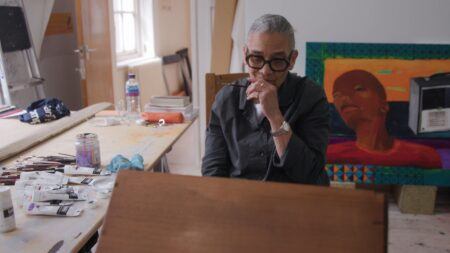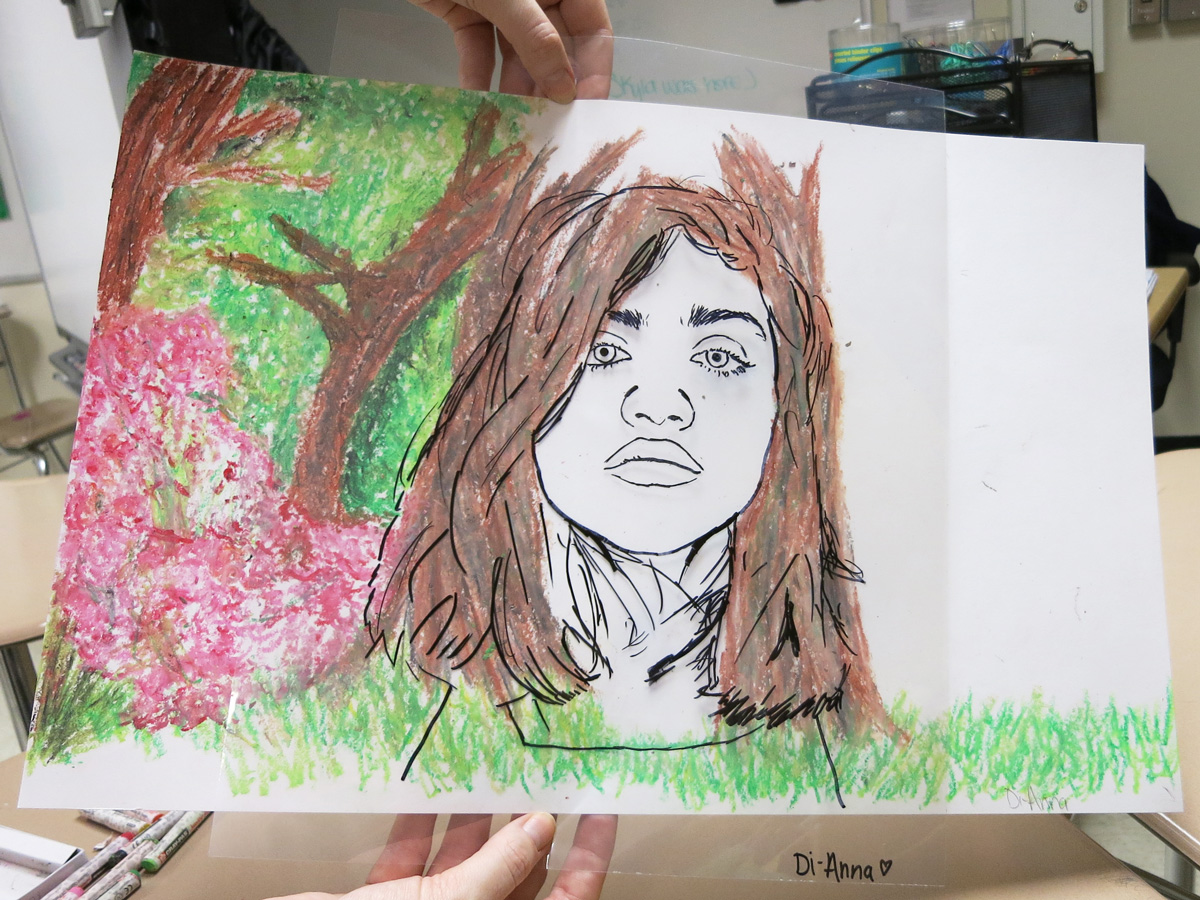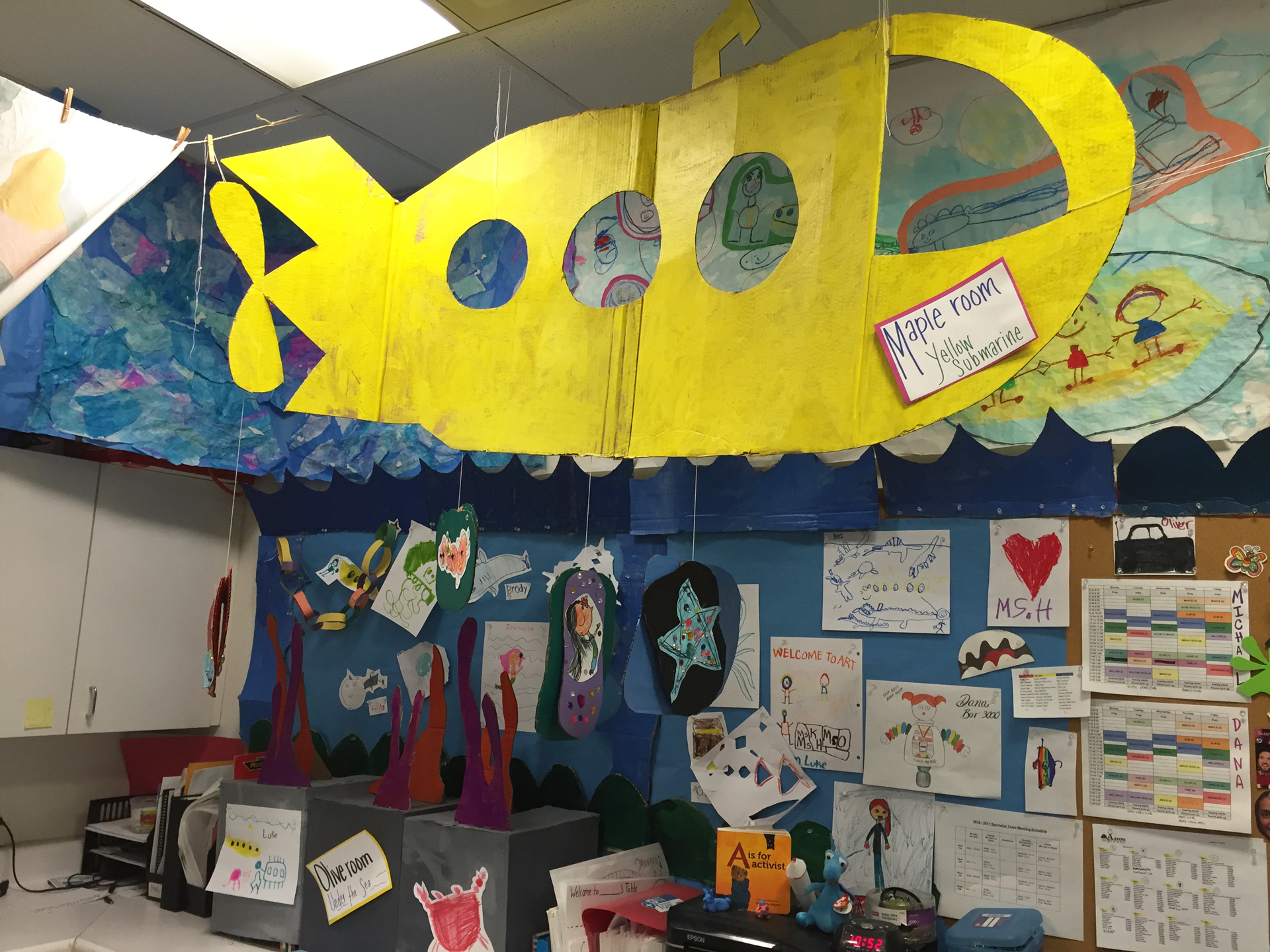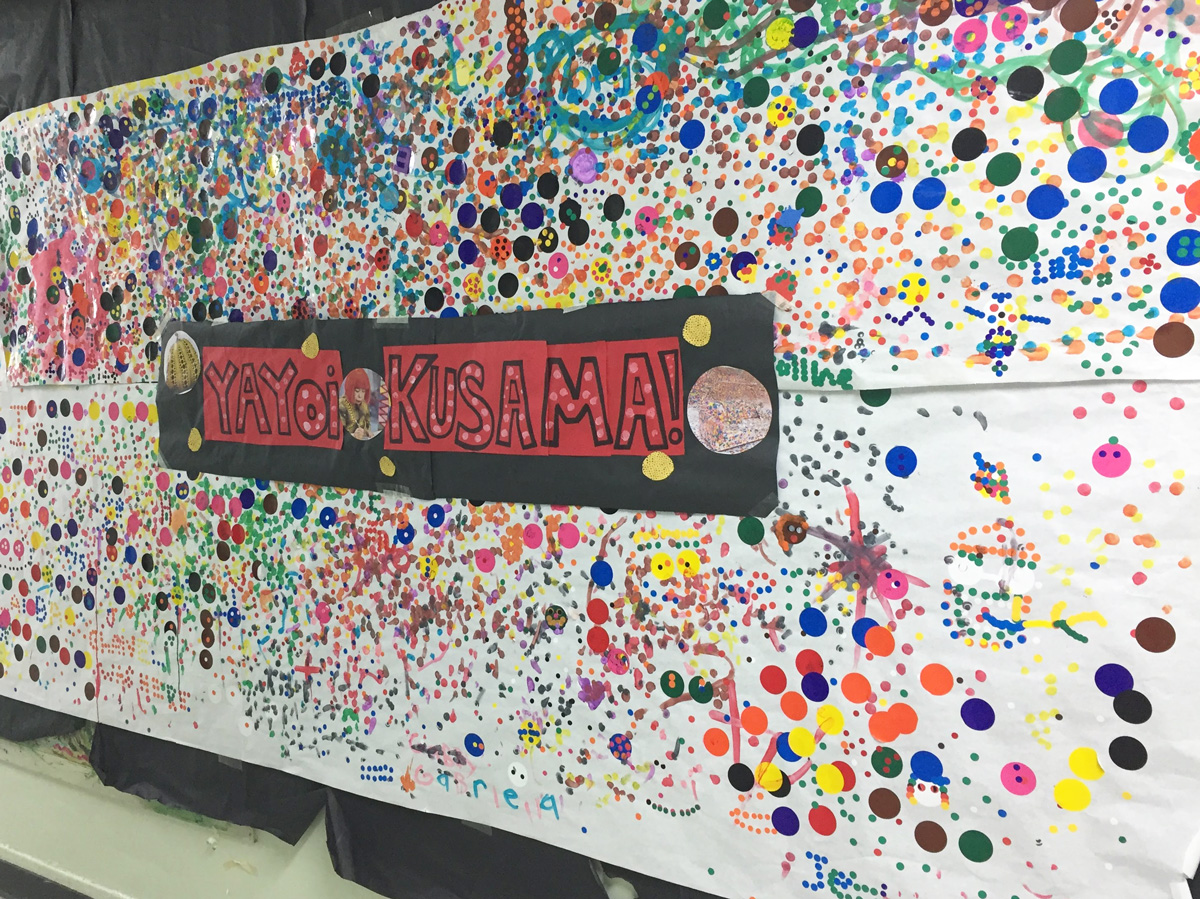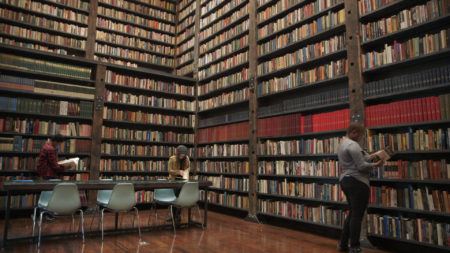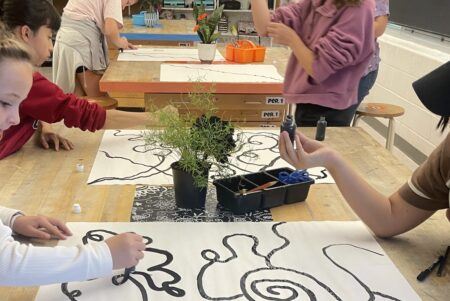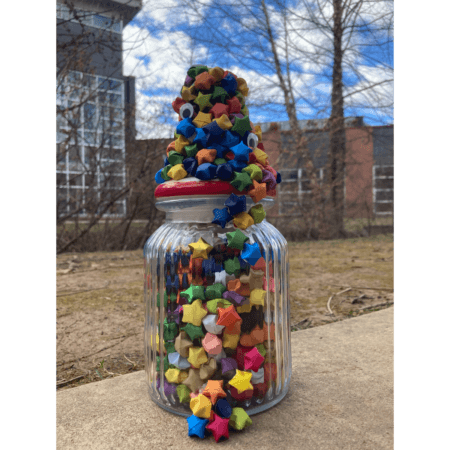Teaching with Contemporary Art
Extending Beyond Craftsmanship, into Inquiry and Exploration
I was first introduced to the idea of teaching with contemporary art and artists in the Art + Education graduate program at New York University, which “envisions a radical space where contemporary art and social justice education meet.”¹ While in school, I helped to coordinate the Art21 Educators program, led by Jess Hamlin and Joe Fusaro. Since then, I have been teaching in a variety of school and educational settings in New York City, using contemporary artists as creative role models for artists of all ages and abilities. One of the things I strive for in my curriculum is to foster a sense of play with purpose. My goal is to provide students with experiences that will challenge them to solve problems, establish relationships, and learn to think critically as well as creatively.
Teaching with the themes of contemporary art and artists has enabled me to show students new ways of being creative with both materials and approaches. Examples of contemporary artists also provide insight into the creative process, extending beyond craftsmanship and into inquiry and exploration. Unlike many traditional artists represented throughout art history, contemporary artists reflect a wider diversity of experiences, in terms of race, gender, background, beliefs, and sexual orientation, and it is important for students to see that kind of diversity represented in the role models that we teach in any subject area, not only in the arts.
In my first year after grad school, I worked as a teaching artist with a nonprofit organization in the Bronx, where I taught both elementary and high-school students. However, I was not an integrated member of the school or the surrounding community, and many of my students had never had an art class before. In this context, teaching art using contemporary artists as creative role models meant starting with structured, skill-building activities and looking at artists like Laylah Ali, Cindy Sherman, Kehinde Wiley, and Chuck Close—artists whose work met students’ expectations that art is representational and based in drawing, painting, and photography. In the past, many of my students may not have felt welcome, invited, or able to look at, understand, or make art. Meeting some of their expectations about art while helping them to develop new artistic skills established a foundation of trust, which made looking at and making art more accessible. Building that confidence enabled us to move beyond the technical aspects of art making and into the questions and ideas these artists explore in their work: themes like identity, race, gender, and storytelling, ones that my students could easily identify with. This eventually paved the way for more open-ended explorations of materials and discussions about the possibilities of what art could be, which included looking at different kinds of artists like Oliver Herring, whose work involves performance and public participation.
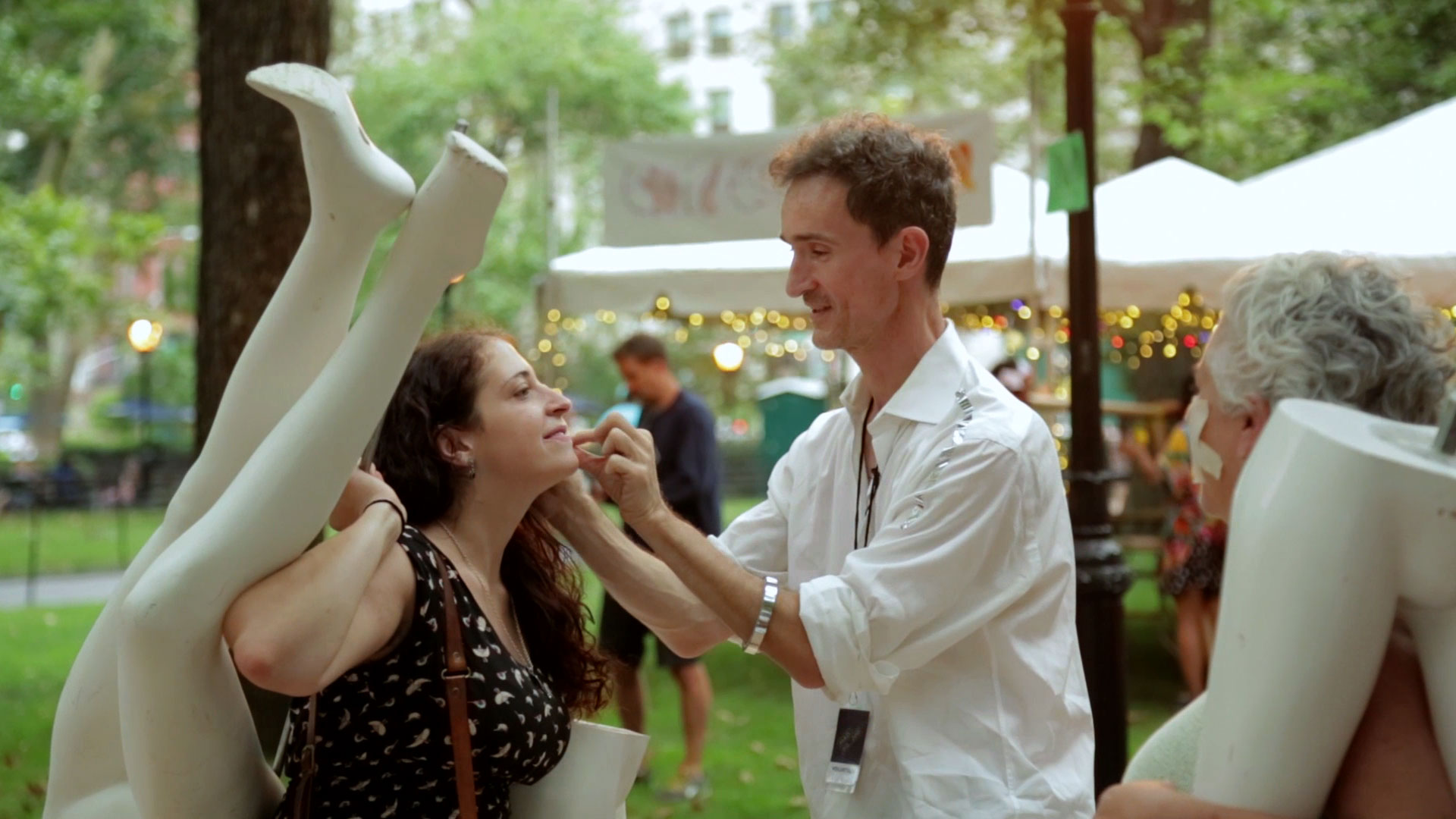
Oliver Herring and a participant of his public party, Task, 2014. Production still from the Extended Play episode, Oliver Herring: Task. © Art21, Inc. 2014.
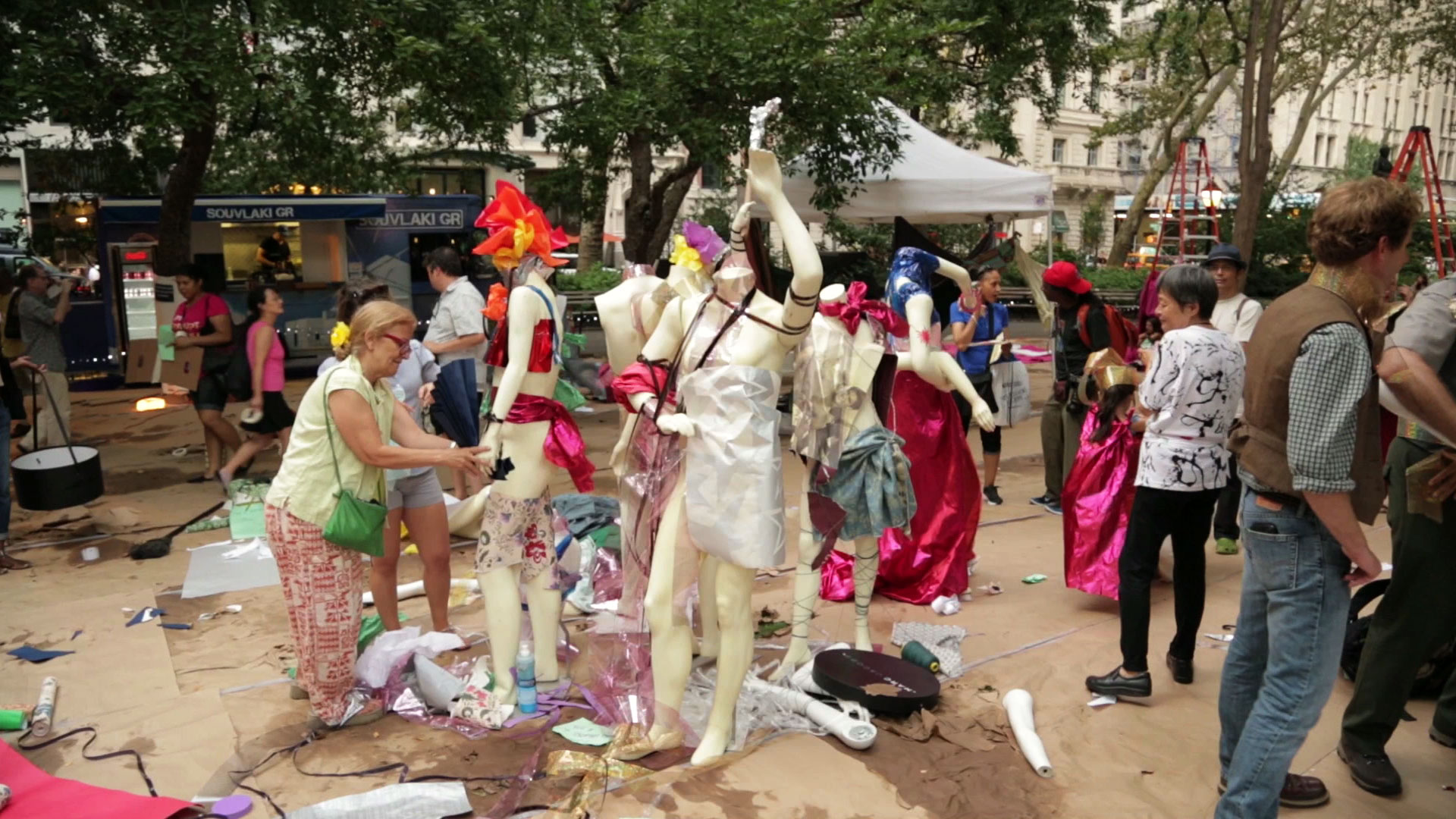
Participants of the Task party organized by Oliver Herring, 2014. Production still from the Extended Play episode, Oliver Herring: Task. © Art21, Inc. 2014.
“Contemporary artists allowed me to introduce students to the possibilities of what art could be.”
In my next few years of teaching, I worked at a small, private, special-education school in midtown Manhattan, serving students in grades K–7. My classes were small and co-taught with another art teacher. My classroom studio was spacious and fully stocked with art materials, and my students had a variety of learning disabilities in reading, writing, and math, in addition to attention, sensory, and social challenges. Again, in this context, teaching with the themes of contemporary artists allowed me to introduce students to the possibilities of what art could be, beyond their expectations of drawing and painting. At the same time, I had become especially interested in creating experiences with art and artists that would provide my students with opportunities to better understand social-emotional learning skills. The Collaborative for Academic, Social, and Emotional Learning (CASEL) defines social and emotional learning (SEL) as “the process through which children and adults understand and manage emotions, set and achieve positive goals, feel and show empathy for others, establish and maintain positive relationships, and make responsible decisions.”² For many of my students, social relationships and emotional regulation were challenges, so I tried to focus on skills such as cooperation, empathy, and compromise in my curriculum.
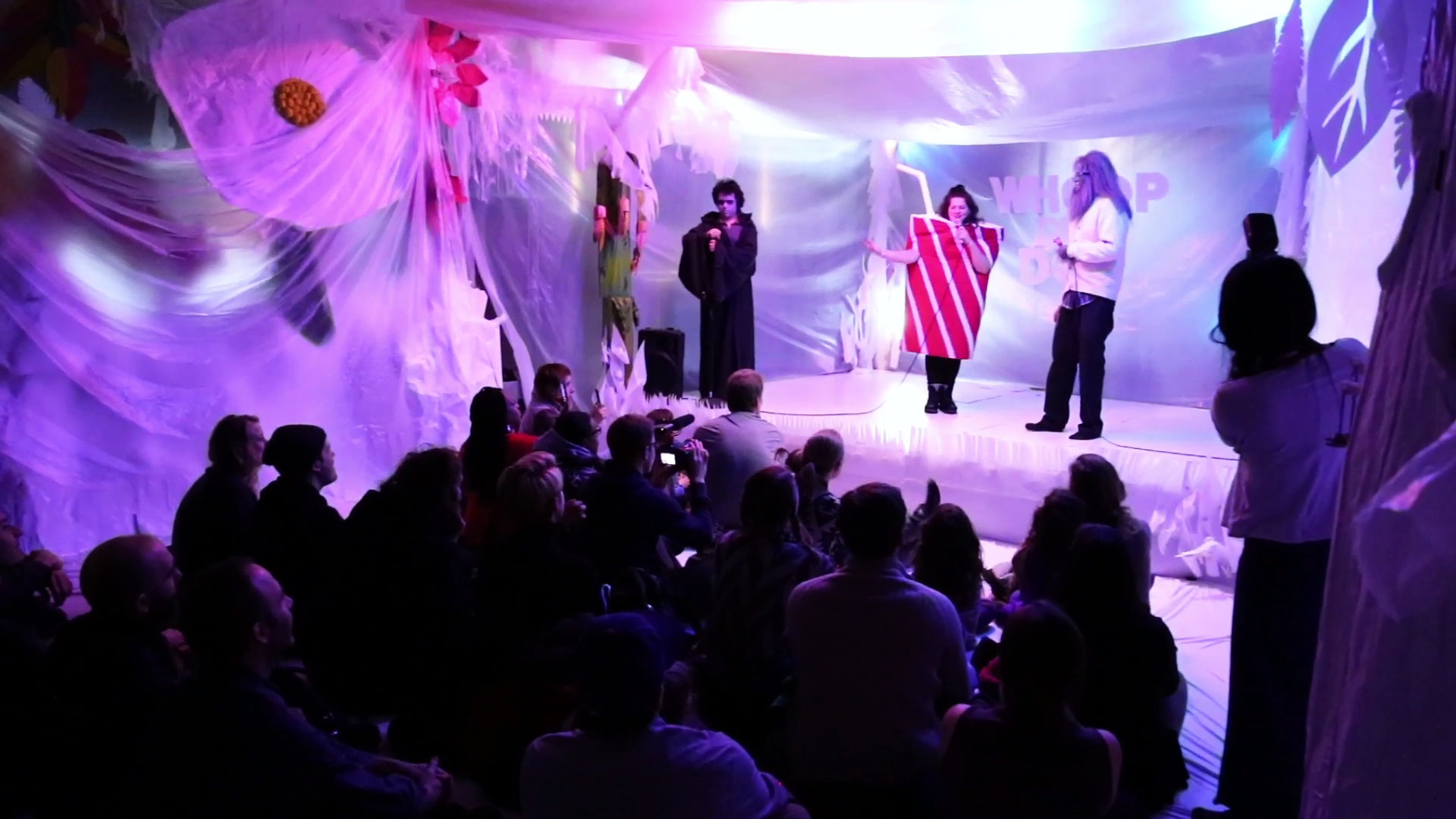
Jamie Warren and Matt Roche on set of a performance of Whoop Dee Doo!at Abrons Art Center, 2015. Production still from the New York Close Up episode, Welcome to Whoop Dee Doo! (with Matt Roche & Jaimie Warren Too). © Art21, Inc. 2015.
Many contemporary artists work in collaboration with others, and artist duos like Jaimie Warren and Matt Roche became exciting models for social-emotional learning in my curriculum. Whoop Dee Doo! is a kid-friendly variety show and performance-art experience led by Warren and Roche. They work together with community, cultural, and student groups to plan a theme for their shows, and they transform a space into an immersive environment for the final performance. After screening the Art21 film Welcome to Whoop Dee Doo! (with Matt Roche & Jaimie Warren Too) in class, I assigned each grade level to a different space in the art room, which they were responsible for transforming as a team. The students started by brainstorming and drawing their ideas about what they wanted to see in the space. Then they presented their ideas and had to work together to come up with a plan that would work for the whole class. Some classes were able to compromise and work around the same theme (like an underwater world or a shopping mall) while others had to find creative ways of combining seemingly disparate ideas (like monsters, aliens, football, Illuminati, and Halloween). The end result was a collaborative classroom installation in which students felt empowered by seeing themselves, their ideas, and their artwork represented in the physical space.
“Artists have the ability to show students not only how to create but also how to communicate ideas.”
I’m now teaching at a large, K–5 charter school in Queens that promotes progressive values for education, including an emphasis on environmental sustainability, experiential learning, and social justice. It is an inclusion school that places students with disabilities in general-education classrooms, to learn alongside their neurotypical peers. Also, our student population speaks forty-two different languages with their families at home, and we have a number of students who are learning English as a new language in school. In this context, teaching with the topics of contemporary artists means that I can include artists in my curriculum who not only look like my students but also have life experiences and cultural backgrounds that reflect those of my student community. For example, the Japanese painter and sculptor, Yayoi Kusama, with her obsessive use of colorful dots, inspired my students to consider art making as a mindful act and a way to create safe spaces in school. Another example is the Chicago-based performance artist Nick Cave, who created his whimsical sculptures, known as “sound suits,” as a means of protection against his experiences of racism as a Black man in America. By showing a wide range of artists in terms of both medium and demographics to my students, I’m hoping to combat traditional notions of who gets to be an artist and to explore what it means to be an artist. Changing large, cultural narratives about diversity can start in the classroom if we can empower young students to envision a different future for themselves.
By teaching with the subjects of contemporary artists, especially with elementary-age and neuro-diverse students, I want to continue to exceed my students’ expectations about what art is, what art can be, and who gets to be an artist. I want my students to have fun and work together like the artists behind Whoop Dee Doo!, to experiment with new materials like Nick Cave, and to practice being mindful like Yayoi Kusama. These artists have the ability to show students not only how to create but also how to communicate ideas and to think in new and different ways. Anyone can learn to become a skilled craftsman, but making meaningful art encourages students to think critically as well as creatively about themselves and the world around them.
¹ Art + Education, Programs and Degrees, NYU Steinhardt, https://steinhardt.nyu.edu/programs/art-education.
² “What is SEL?” Collaborative for Academic, Social, and Emotional Learning, https://casel.org/what-is-sel/.
